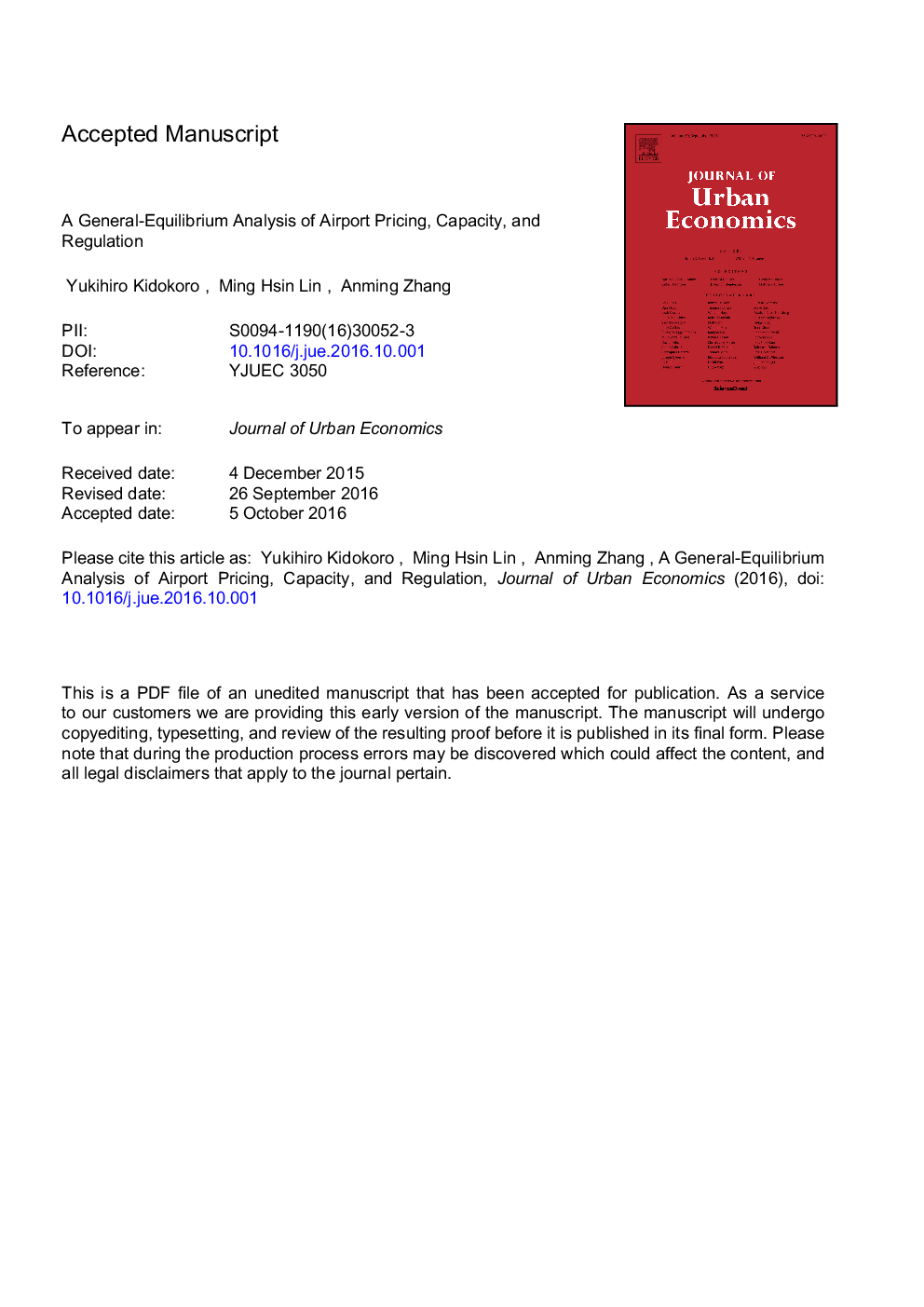| Article ID | Journal | Published Year | Pages | File Type |
|---|---|---|---|---|
| 5101988 | Journal of Urban Economics | 2016 | 38 Pages |
Abstract
Using a general-equilibrium model that includes consumers, airlines, and an airport with both aeronautical services and non-aeronautical services, this study investigates the airport's decisions on its aeronautical charge and capacity, as well as the size of its non-aeronautical services. In contrast to the existing literature, we formally model an airport's non-aeronautical services by taking into account the endogenous determination of the size of the airport's non-aeronautical services. First, we characterize the results for welfare maximization, and find that the self-financing property does not hold. Apart from carriers' market power as a source of the failure for the self-financing property, we identify the presence of non-aeronautical services as a new source. Further, we show that the common practice of cross-subsidizing from the non-aeronautical to aeronautical services is incompatible with welfare maximization because welfare maximization requires exact self-financing within the non-aeronautical sector. Second, we derive the results for profit maximization by a monopolistic airport, and demonstrate that the imposition of two taxes, one on the airport's aeronautical services and the other on its capacity investment, can recover the welfare-maximization results. Third, we analyze the two types of regulation, single till and dual till, which are often used in practice, and show that dual-till regulation yields higher welfare than single-till regulation, as long as the profit from non-aeronautical services is positive. This result is in contrast to the prevailing wisdom in the literature, which in general favors single-till regulation.
Keywords
Related Topics
Social Sciences and Humanities
Economics, Econometrics and Finance
Economics and Econometrics
Authors
Yukihiro Kidokoro, Ming Hsin Lin, Anming Zhang,
